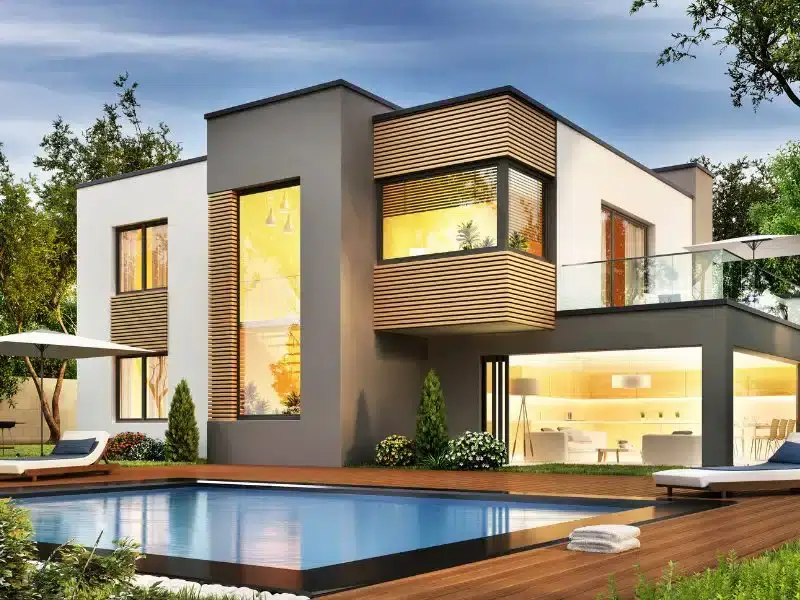Key Takeaways
- Modern homebuyers prioritize sustainability, smart technology, and flexible living spaces.
- Design elements, such as biophilic features and multifunctional areas, enhance both aesthetics and functionality.
- Staying informed about current trends can lead to better investment decisions and increased property value.
The real estate landscape is evolving rapidly as architectural and interior design trends influence what buyers seek in their next home. Understanding these trends can give buyers an edge, helping them find properties that not only align with current tastes but also promise long-term value. For example, those interested in upscale markets may want to explore available Calabasas CA homes for sale to see how these design trends are shaping luxury living in sought-after neighborhoods. Staying well-informed about the latest trends in home design ensures that buyers make informed, forward-thinking choices that enhance both the quality of life and investment potential.
Keeping up with what’s current in architecture and interior design is about more than aesthetics—it’s about creating spaces that enhance daily life, promote wellness, and make a property stand out in a dynamic market.
Sustainable and Eco-Friendly Design
Today’s homebuyers are keenly aware of environmental impact. Sustainable design features such as energy-efficient windows and appliances, solar panels, and rainwater harvesting systems have become must-haves. The use of recycled materials and renewable resources, such as bamboo or reclaimed wood, highlights a commitment to both design innovation and a reduced carbon footprint. Modern green building certifications, such as LEED and Energy Star, are increasingly viewed as assets that enhance the value and marketability of a home.
Integration of Smart Home Technology
Smart homes are quickly becoming the standard rather than the exception. Automated systems manage lighting, climate, security, and entertainment with the touch of a button or a voice command. These features don’t just add convenience, they also boost energy efficiency and appeal to tech-savvy buyers who value seamless integration with their digital lifestyles. According to CNET, the latest innovations in smart home technology are shaping buyer expectations for 2025 and beyond. As more buyers view smart home upgrades as essential, properties without these features risk being overlooked.
Incorporating Biophilic Elements
Biophilic design, which fosters a closer connection between people and nature, is gaining popularity for its calming effects and ability to enhance mental well-being. Homes featuring large windows, indoor plants, living walls, and the thoughtful use of natural stone or wood are particularly sought after. These elements help reduce stress, improve mood, and offer a respite from urban life, making homes feel like nurturing sanctuaries.
Flexible and Multifunctional Spaces
The growing trend toward remote and hybrid work has accelerated the demand for adaptable spaces within the home. Open floor plans offer flexibility for various functions, including home offices, gyms, guest accommodations, and play areas. Features such as sliding partitions, built-in storage, and rooms that can serve multiple purposes allow homeowners to tailor their environments as their needs change, ensuring long-lasting utility and satisfaction.
Seamless Indoor-Outdoor Living
Modern architecture is blurring the distinction between the inside and the outside. Glass walls, oversized sliding doors, and patios designed as true extensions of the home invite nature into everyday routines. Outdoor kitchens, fire pits, and lounge areas provide natural settings for entertaining and relaxation, appealing to those who love both privacy and sociability. These features are especially popular in regions with mild climates, allowing for year-round enjoyment of outdoor spaces.
Personalization and Bespoke Design
Today’s buyers are drawn to homes that reflect their individual personalities. Bespoke features—from custom cabinetry and built-ins to unique architectural flourishes—add a sense of exclusivity. Having the option to select finishes, layouts, or even incorporate legacy materials supports greater emotional attachment and satisfaction, ensuring each home truly stands out in the marketplace.
Embracing Minimalism
Minimalism continues to shape modern home design, valuing simplicity, clarity, and a ‘less is more’ approach. Clean lines, uncluttered spaces, and functional furnishings create environments that are visually soothing and easy to maintain. This aesthetic appeals widely to buyers seeking tranquility and a strong sense of intentional design, while also placing emphasis on quality craftsmanship and materials over excess.
Architecture and design trends evolve in response to the way we live, work, and dream. By embracing what’s current—whether it’s a commitment to sustainability, the adoption of smart technology, or the pursuit of personalized comfort—today’s homebuyers can make choices that ensure their homes remain relevant, valuable, and deeply enjoyable for years to come.
